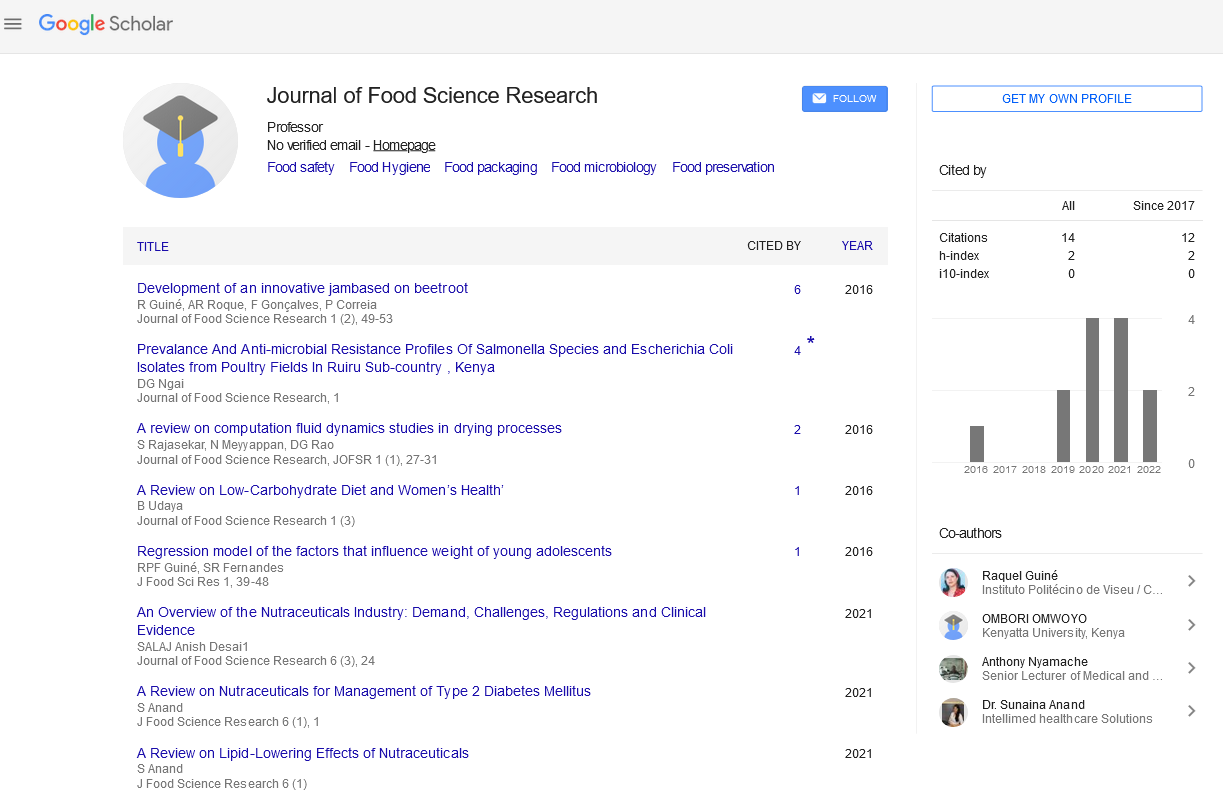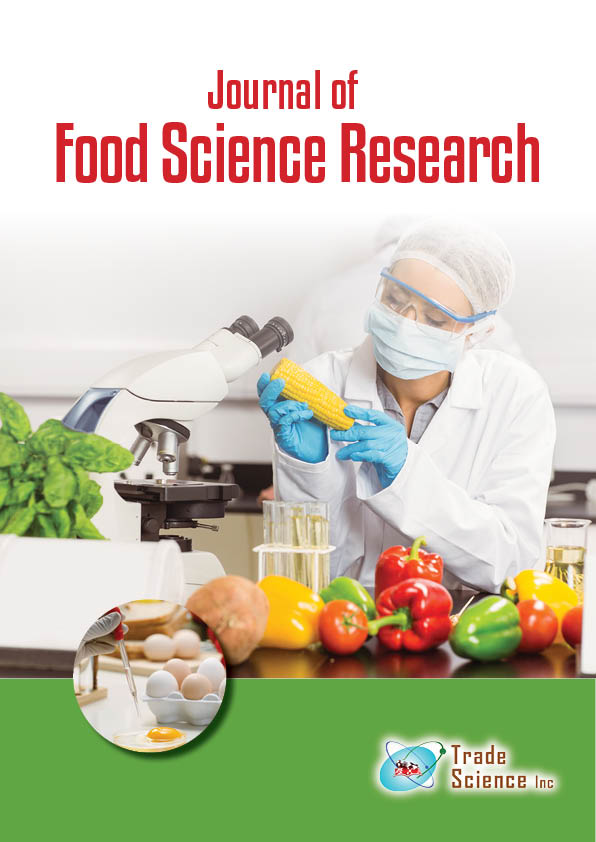Short communication
, Volume: 6( 4)The specificity of antimicrobial activity of Brassicaceae isothiocyanates
Introduction: Statement of the Problem: Food preservation is an ongoing challenge to food industries, particularly with the increased interest in mild processing to preserve flavors and to meet consumer demand for natural preservatives. Application of plant-derived antimicrobial compounds has obtained renewed interest in this respect. Condiments are known to contain antimicrobial compounds, such as mustard and wasabi, both belonging to the Brassicaceae family. Allyl Isothiocyanate (AITC) is the active component in these condiments and is reported to possess antimicrobial activity. Chemically diverse ITCs can be obtained from their precursors, i.e. glucosinolates, and thus the antimicrobial activity of ITCs may vary. Purpose: The purpose of this study is to determine the specificity of antimicrobial activity of various ITCs. Methodology: Broth microdilution assays were done to test 11 ITCs for their antimicrobial activity against food spoilage or pathogenic microorganisms including: Listeria monocytogenes, Staphylococcus aureus, Bacillus cereus, Escherichia coli, Salmonella typhimurium, Pseudomonas aeruginosa, Candida holmii, Saccharomyces cerevisiae and Aspergillus niger. Findings: All tested ITCs displayed growth-inhibitory effect on all tested microorganisms in a dosedependent manner. 9-methylsulfonyl-nonyl ITC (9-MSoITC) and 9-methylsulfinyl-nonyl ITC (9-MSITC) were the most potent against B. cereus, with a minimum inhibitory concentration (MIC) of 25 and 50 μg/mL, respectively. The same ITCs were also the most potent against L. monocytogenes, S. cerevisiae and A. niger (MIC 25 μg/mL). 9-MSITC was the most potent against S. aureus (MIC 50 μg/mL). 9-MSITC and phenethyl ITC (PhEITC) had the highest efficacy against C. holmii (MIC 50 μg/mL). 3-MSoITC and 3-MSITC were the most potent against E. coli (MIC 25 μg/mL), S. typhimurium (MIC 50 μg/mL) and P. aeruginosa (MIC 400 μg/mL). Furthermore, ITCs showed killing effect on all tested microorganisms. Conclusion & Significance: Various ITCs have stronger antimicrobial potency than AITC. ITCs with long side chain were active against gram-positive bacteria and fungi, whereas those with short side chain were active against gram-negative bacteria.
Abstract
Statement of the Problem: Food preservation is an ongoing challenge to food industries, particularly with the increased interest in mild processing to preserve flavors and to meet consumer demand for natural preservatives. Application of plant-derived antimicrobial compounds has obtained renewed interest in this respect. Condiments are known to contain antimicrobial compounds, such as mustard and wasabi, both belonging to the Brassicaceae family. Allyl Isothiocyanate (AITC) is the active component in these condiments and is reported to possess antimicrobial activity. Chemically diverse ITCs can be obtained from their precursors, i.e. glucosinolates, and thus the antimicrobial activity of ITCs may vary. Purpose: The purpose of this study is to determine the specificity of antimicrobial activity of various ITCs. Methodology: Broth microdilution assays were done to test 11 ITCs for their antimicrobial activity against food spoilage or pathogenic microorganisms including: Listeria monocytogenes, Staphylococcus aureus, Bacillus cereus, Escherichia coli, Salmonella typhimurium, Pseudomonas aeruginosa, Candida holmii, Saccharomyces cerevisiae and Aspergillus niger. Findings: All tested ITCs displayed growth-inhibitory effect on all tested microorganisms in a dosedependent manner. 9-methylsulfonyl-nonyl ITC (9-MSoITC) and 9-methylsulfinyl-nonyl ITC (9-MSITC) were the most potent against B. cereus, with a minimum inhibitory concentration (MIC) of 25 and 50 μg/mL, respectively. The same ITCs were also the most potent against L. monocytogenes, S. cerevisiae and A. niger (MIC 25 μg/mL). 9-MSITC was the most potent against S. aureus (MIC 50 μg/mL). 9-MSITC and phenethyl ITC (PhEITC) had the highest efficacy against C. holmii (MIC 50 μg/mL). 3-MSoITC and 3-MSITC were the most potent against E. coli (MIC 25 μg/mL), S. typhimurium (MIC 50 μg/mL) and P. aeruginosa (MIC 400 μg/mL). Furthermore, ITCs showed killing effect on all tested microorganisms. Conclusion & Significance: Various ITCs have stronger antimicrobial potency than AITC. ITCs with long side chain were active against gram-positive bacteria and fungi, whereas those with short side chain were active against gram-negative bacteria.

